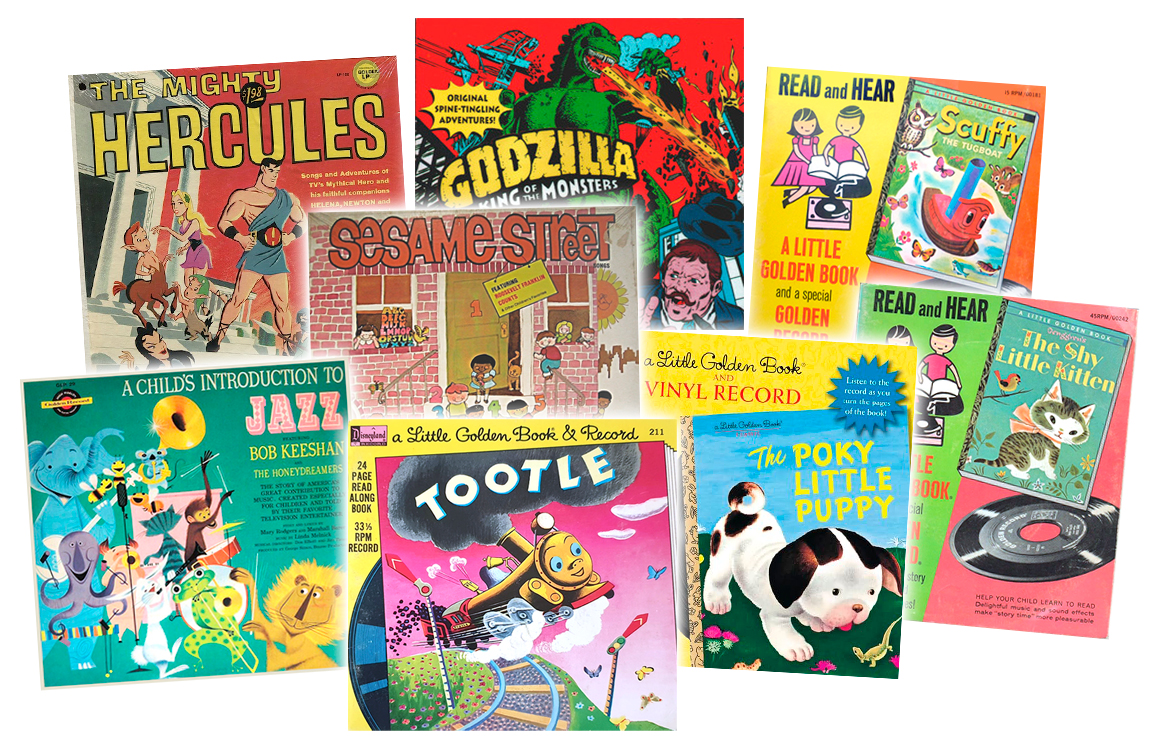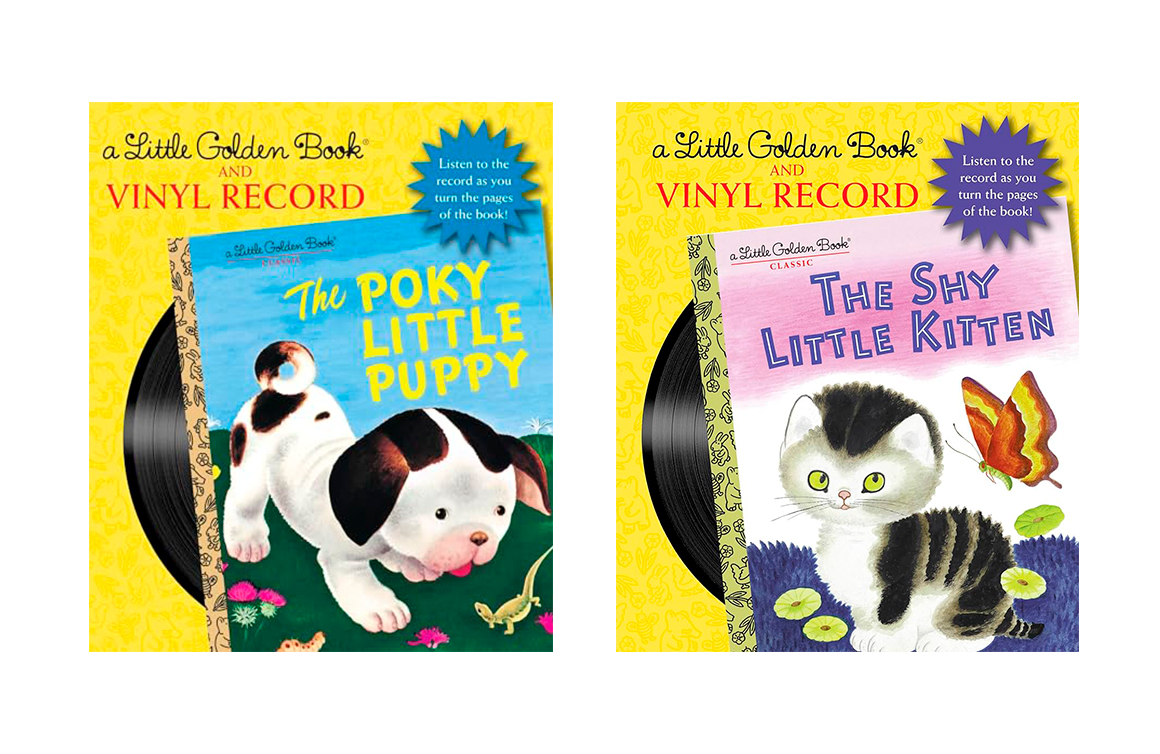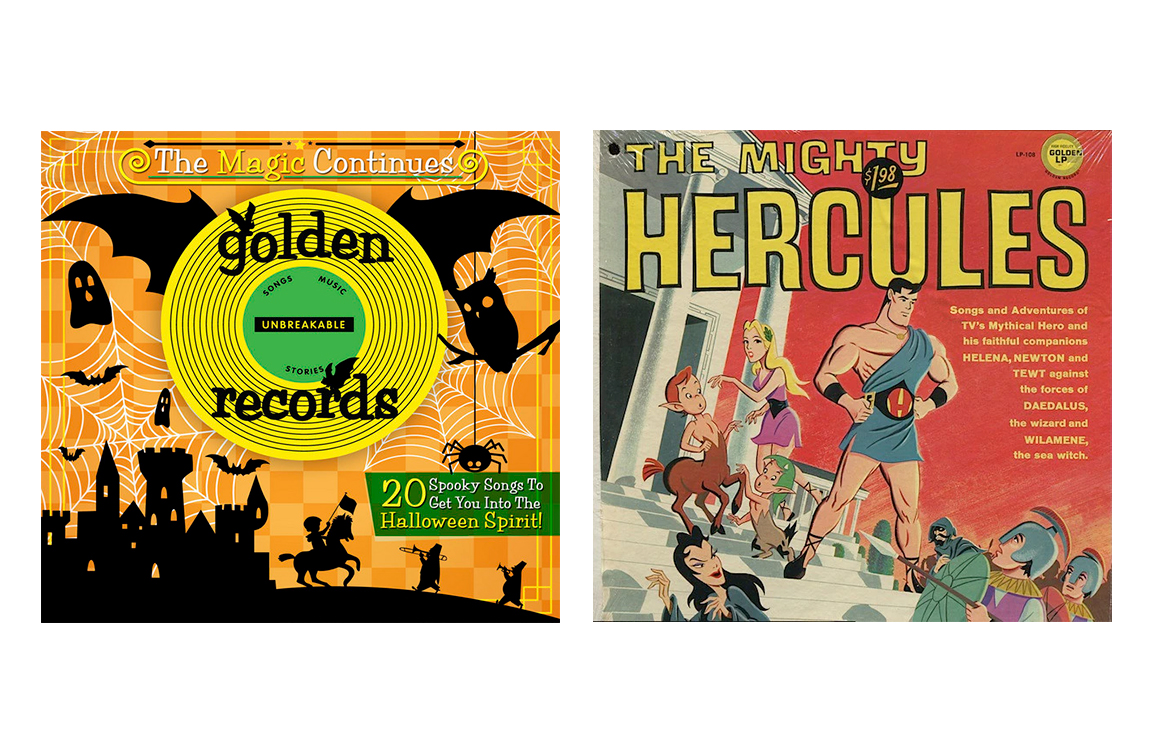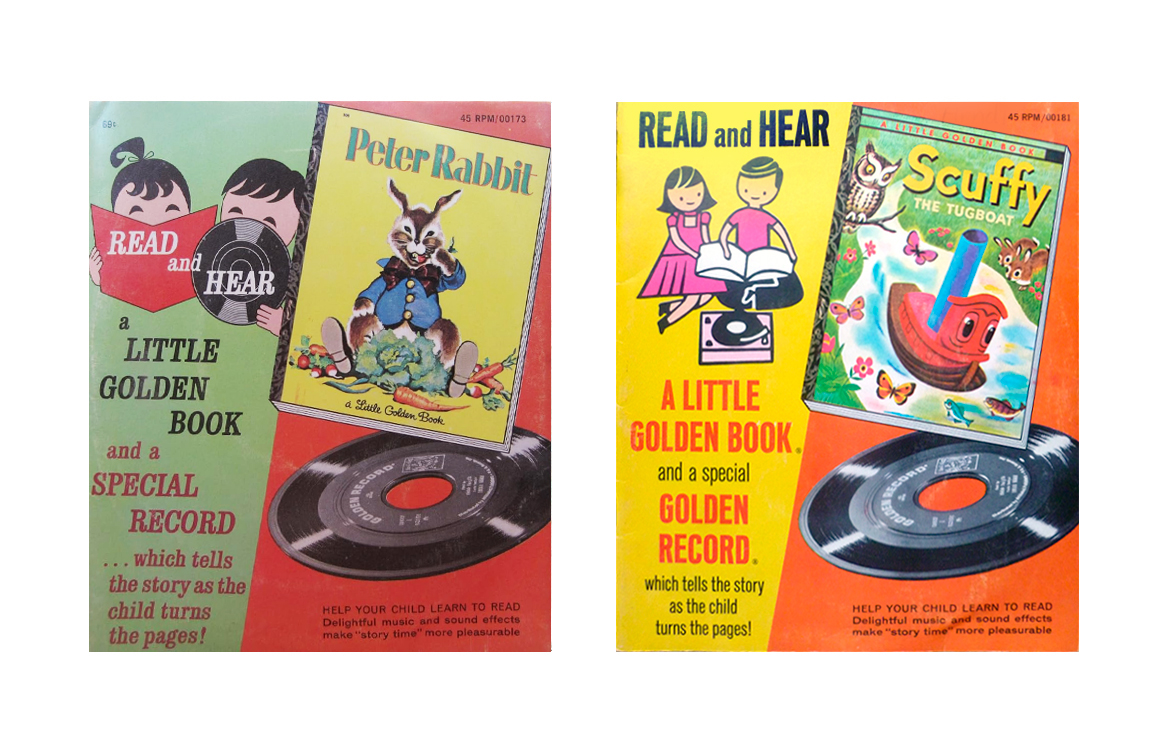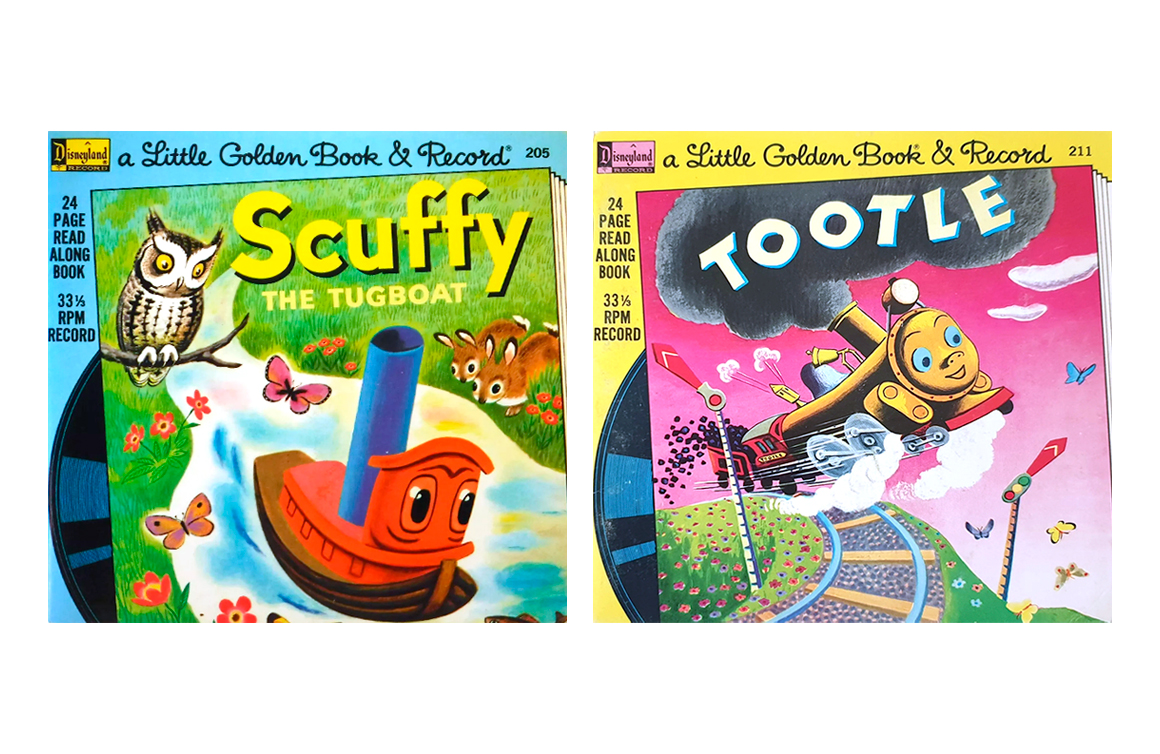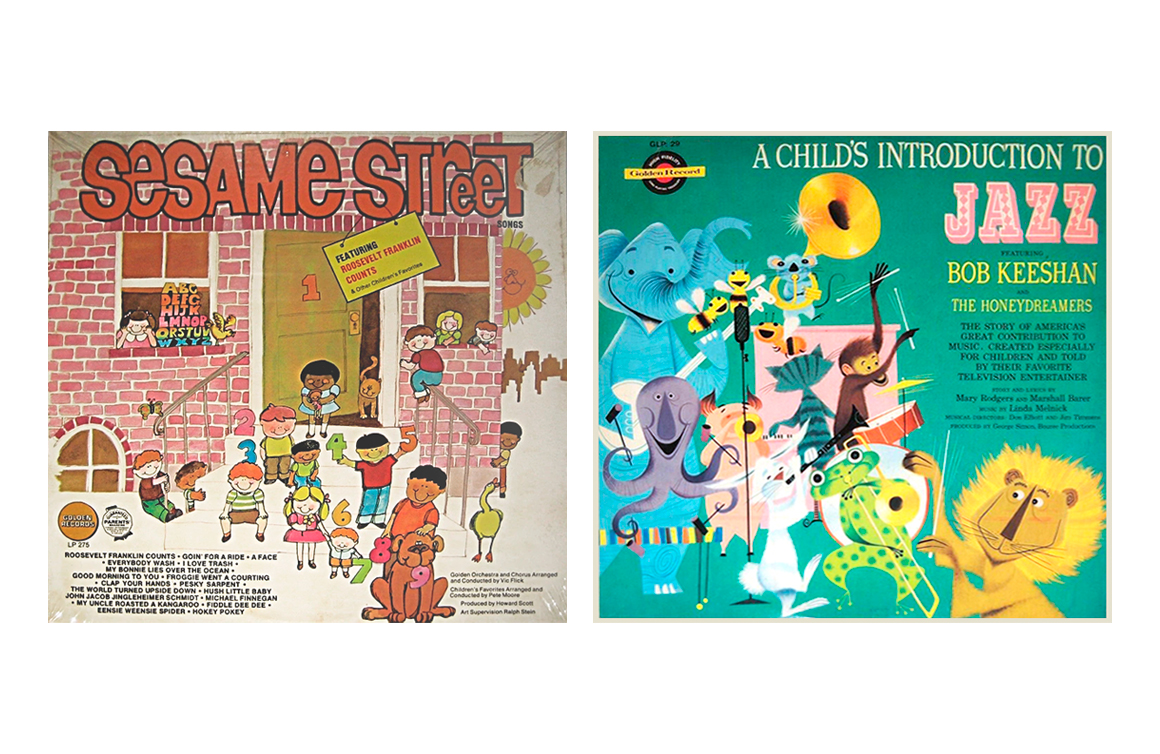Golden Records has been synonymous with fun, educational, and multigenerational children’s entertainment for over 30 years and its history is as fascinating as that reminiscent of iconic labels like Peter Pan and Disneyland. Let’s journey back to this label’s origins, which are rather unique.
The Early Years
The year was 1942. In New York, the publishers at Simon and Schuster and Western Publishing produced the first 12 titles in the Little Golden Book series for children. A few years later, a gentleman named Arthur Shimkin developed a marketing concept during that imprint’s expansion. In 1948, he introduced Little Golden Records — bright yellow 6-inch discs played at 78 RPM and containing musical story versions of The Poky Little Puppy, Scuffy the Tugboat, and Tootle. The label operated under the parent company, A.A. Records — the first “A” was for Arthur Shimkin, the second “A” was for co-owner Al Massler.
Mitch Miller, head of Columbia Records at the time, served as the first musical director of the Little Golden label. The Sandpipers, named after Simon and Schuster’s division Sandpiper Press, performed most of the materials. The group usually consisted of five members, including Anne Lloyd and Mike Stewart.
By 1956, while the 78- and 45-vinyl formats were still in production, Golden compiled its back catalog into a new 12-inch LP series. At the same time, the label produced a unique read-along series, Little Golden Books That Read Themselves. These came as a set of 78s or 45s packaged with an actual Little Golden Book, with Miller was musical director [for the record (pun intended), Golden was not the originator of the book and record combination. That distinction goes to Columbia’s Bubble Books, released between 1917 and 1922].
Rise to Prominence
By the time Jimmy Carroll joined Miller to arrange and conduct, Golden had diversified its catalogue by acquiring licenses for various popular television and cartoon characters. These included icons such as Donald Duck, Mighty Mouse, Lassie, the Lone Ranger, Annie Oakley, and Leave It to Beaver, bringing fresh appeal to Golden’s offerings.
Then, in 1959, Jim Timmens joined the label to compose and arrange in his own music style based on his jazz background. He first worked on the album A Child’s Introduction to Jazz featuring Bob Keeshan (known as TV’s Captain Kangaroo) as narrator, assisted by the Honeydreamers. In 1961, Timmens took over as musical director.
Between the directions of Miller, Carroll, and Timmens, one of Golden Records’ core strengths was the use of celebrity performers. Among them were Keeshan, as mentioned above, Bing Crosby, Alfred Hitchcock, Danny Kaye, Art Carney, Shari Lewis, Cab Calloway, and many others.
In 1967, Shimkin and Timmens left Golden for Columbia Records, where they continued to create music for children and eventually took part in a custom label that would become Sesame Street Records in the mid-’70s. Ralph Stein, who previously worked on the Pickwick International labels Cricket, Happy Time, and Pickwick/33, assumed the producer role after Shimkin and Timmens’ exit.
In the spring of 1968, Golden introduced the first 10 titles of the Golden Wonderland series. These titles (from The Tale of Peter Rabbit to Alice in Wonderland), which include performances by Vivien Leigh, Noel Harrison, Cyril Ritchard, Robert Morley, and Martyn Green, were culled from the old Wonderland line, which Golden acquired from Riverside the previous year. Golden adopted a different logo for this series and updated the cover art.
Howard Scott produced for three years beginning in 1969, including albums such as the musical version of Danny Dunn and the Homework Machine, the classic Halloween, and Songs from Sesame Street (1970). Stein returned to the role afterward.
Shifting Tides
In 1972, a pivotal shift in the children’s music scene occurred. Western Publishing Company, co-publisher of the Little Golden Books, secured the rights to the Golden name, leaving A.A. Records in an identity crisis. However, A.A. compromised with Western by temporarily allowing the former to continue using the name while taking time to rebrand. A.A. settled on Wonderland Golden Records and kept the logo from the Golden Wonderland series. Two years later, Wonderland Records entered the market.
Despite rising manufacturing costs, a shrinking market, and tighter budgets, Wonderland Records persevered, continuing to produce albums, read-alongs, and cassettes. The challenges, however, did not stop there. A.A. Records lost licenses for popular characters like Popeye, Batman, and Superman, which forced them to get creative with artwork. Later releases featured generic images such as a boat, a bat, and a tiny silhouette of a man flying, reflecting the minimalistic approach they chose to adopt.
In 1982, Wonderland produced its final set of albums. By 1984, the last issues of its condensed read-along series hit store shelves, marking the end of an era. Shortly afterward, A.A. Records closed its doors and Golden/Wonderland faded into history. But that was not the end of the story.
In the Modern Era
In 1996, Golden Records experienced a revival when Drive Entertainment began reissuing a series of albums from the original label on cassettes and CDs that maintained the original artwork. Among these were titles such as Godzilla, King of the Monsters, The Mighty Hercules, and Casper the Friendly Ghost, as well as albums from Children’s Records of America (CRA) and Columbia Children’s Library. Image Entertainment later issued similar albums under the Golden/Wonderland banner, albeit with generic artwork.
In 2009, Micro Werks, a subsidiary of Shout Factory, released two CDs titled From Your Golden Childhood: The Best of Little Golden Records. The compilations featured a selection of materials from the catalogue from 1948 to the early ’70s, from the Mighty Mouse theme song to a cover of On Top of Spaghetti.
In 2011, Verse Music Group, an entertainment company based in New York City and Los Angeles, took ownership of the Golden Records catalogue and its name. The following year, it began reproducing the catalogue and released the first batch of reissues with the help of Arthur Shimkin’s son Tony. These included compilations of original materials paired with classic tracks featuring new vocals from celebrities such as Edward Asner, Alicia Silverstone, Missi Pyle, Wallace Shawn, Dermot Mulroney, and others.
Then, in 2015, BMG Rights Management acquired Verse Music Group, taking possession of several publishing and recording catalogues, including Golden and Wonderland. 2018 saw the reissues of the classic book and 7-inch LP record sets of two titles: The Shy Little Kitten and The Poky Little Puppy.
In an ironic twist that brought everything together, BMG Rights Management’s parent company, Bertelsmann, also owns Penguin Random House, the current distributor of — you guessed it — Little Golden Books. It’s a literary circle of life.
And now, as they say, you know the rest of the story. Before I wrap things up, here’s a fun piece of trivia: Robert L. Simon, the “Simon” of Simon and Schuster, had four children. Two of them were the famed sisters, musicians Lucy and Carly Simon.
If you’ll excuse me, I’m off to play a few Golden Records, especially the Little Golden Books that read themselves.

